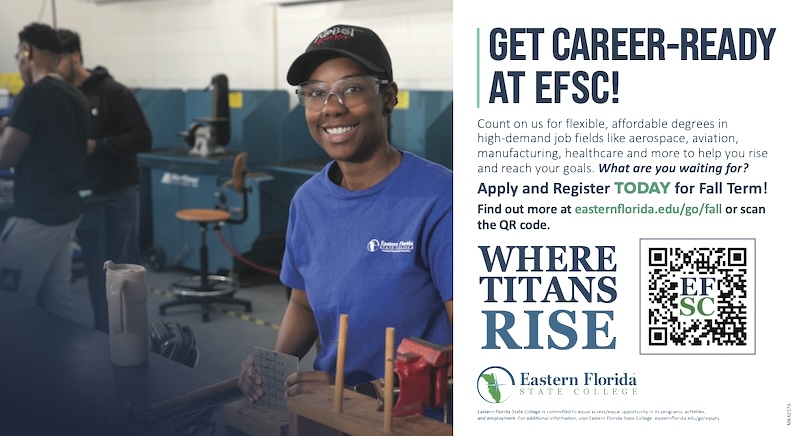Most Effective Snoring Aids: MouthGuards V Tongue Stabilizers
By Space Coast Daily // January 11, 2021

Mouthguards (MADs) and tongue stabilizers (TSDs) MADs are two of the most popular types of anti-snoring devices on the market. There is no secret behind their popularity. MADs and TSDs are the go-to solution of so many snorers because they generally offer the best results.
MAD is an acronym. So is TSD. MAD stands for mandibular advancement device. TSD stands for tongue stabilizing device. Although very different in appearance, both types of device work by pulling the tongue forward. By doing so, they open up the airway at the back of the throat. This is why using MADs and TSDs is such an effective way to control snoring.
Snoring happens when the flesh in the throat and soft palate vibrate in response to air turbulence. However, there’s a little more to the story than that.
Sleep and relaxation go hand-in-hand. During sleep, all the muscles in the body relax. The muscles in and around the airway relax too. When they do, they can sag, disrupting normal airflow during respiration.
Needless to say, when the muscles are in such a relaxed state, they are more pliable and prone to the effects of the turbulence. As is the flesh that covers them.
The tongue is a muscle too. When it relaxes it tends to drop backward. This further restricts airflow, increasing the turbulence.
How MADs and TSDs Control Snoring
MADs pull the tongue forward in quite a clever way. TSDs take a more direct approach. Both options pull on the tongue sufficiently to enlarge the gap between the base of the tongue and the throat by an amount that’s sufficient to provide considerable improvements in airflow.
MADs have a slight edge on TSDs but both options have their pros and cons.
Let’s take a look at how both options work and the benefits and issues each type is likely to present.
MADs advance the lower jaw and hold it forward during sleep. They do this with the help of the teeth.
MADs are somewhat wedge-like in shape. The upper and lower teeth fit inside the device. The trays that hold the teeth contain a plastic resin that’s molded perfectly to the teeth, is a snug fit, and prevents lateral movement.
The tongue is anchored to the lower jaw so, when the jaw moves forward, the tongue has to come too.
This type of device has been around for a long time and research shows how well it can work, both as a snoring aid and as a treatment for mild to moderate sleep apnea (OSA). Latest snoring research has also identified that both devices cover a wide range of other sleep related issues.
Doctors often recommend MADs as a treatment for snoring and OSA. However, using this type of device used to be an expensive route to take because they were only available via dentists.
A dental MAD can cost $1,000 or more. It’s a lot of money to pay but dental MADs are custom-built devices and, in a similar way to dentures, dentists have to begin by making impressions of the teeth.
Then, during the fitting stage, dentists have to set-up the device manually so that it provides adequate advancement of the jaw.
Fortunately, these days, it’s possible to buy “boil and bite” MADs and set them up at home. The two trays contain a thermoplastic that becomes soft when it’s immersed in hot water. When you bite into the soft plastic, it makes a perfect impression of the teeth
Although some boil and bite MADs have clever adjustment mechanisms, many options require you to deliberately advance your lower jaw during the “bite” stage.
MAD Pros & Cons
PROS
■ Clinically proven in many studies
■ Work well for many snorers
■ Doctor recommended
CONS
■ Require strong teeth
■ May initially cause jaw pain
■ Possibility of drooling during sleep
■ Won’t work if you have a stiff jaw
■ Tongue stabilizing devices are also known as tongue retaining devices (TRDs). Both names accurately describe what this type of anti-snoring device does because the tongue is retained inside the device. This pulls it forward and stabilizes it so that it cannot fall backward and obstruct the throat.
TSDs are hollow and have a disc-like section in the middle that sits on top of the lips. The rear section goes inside the mouth, in between the teeth, and has an aperture that holds the tongue.
The front of the device is generally bulbous and always flexible. It’s designed to respond to finger pressure.
TSDs do not require any initial set up. They are good to go as soon as you remove them from the box. They are also very simple to use.
The first thing you do is apply pressure to the bulb at the front of the TSD. Next, you place your tongue inside it. When you let go of the bulb, the resulting suction draws the tongue forward and holds it in place.
Like MADs, TSDs have been around a long time. There are many options available and the quality can vary considerably.
A lot of the TSDs you see for sale online are made from cheap plastic that may make the tongue sore or fail to hold it stable during the night. Such options are often mass-produced in China.
If you are going to invest in a TSD, it’s best to only purchase branded options distributed by reputable manufacturers based in Europe or the USA.
TSD Pros & Cons
PROS
■ Work well for many snorers
■ Suitable for denture wearers
■ Do not rely on the teeth
■ No set up required
CONS
■ May cause drooling
■ Might cause initial tongue pain
■ Not suitable for people with a short tongue
Alternative Snoring Aid Options
Although MADs and TSDs are the two most effective anti-snoring devices, there are other options as well. A few alternative snoring options may offer some level of benefit but are unlikely to deliver such good results.
Other options, such as CPAP, may work well but are costlier treatment options to pursue.
Some options are better than MADs and TSDs for remedying nose snoring, but most people who snore do so through the mouth. Nose snoring is relatively rare.
Nose snoring happens when congestion or other forms of blockage cause turbulence behind the nose.
CPAP
CPAP (continuous positive airway pressure) is the gold standard treatment for obstructive sleep apnea (OSA). Although doctors often recommend MADs for mild to moderate OSA, they always choose CPAP when the condition is severe.
Snoring is often a problem for people who have OSA. However, with OSA, the airflow obstruction becomes severe enough to cause an apnea. This is a period where breathing stops. People who have severe OSA often have up to 100 apneas per hour.
CPAP treatment is provided via a machine. The machine has a small, silent-running motor inside it that pumps out a continuous stream of air.
The air travels down a plastic tube into a CPAP mask, that’s worn on the face. The air the machine provides pressurizes the airway making it less likely to collapse.
There can be no doubt that CPAP offers value as a treatment for normal snoring but the machines are quite expensive and most people don’t relish the idea of sleeping with a mask on their face.
Snoring Chin Straps
Snoring chin straps were originally developed to support CPAP.
If the mouth opens during sleep, it can lower air pressure at the back of the throat, making the treatment less effective. An open mouth also makes the tongue more likely to drop back.
The strap fits over the head and applies pressure under the jaw. When used alongside CPAP, chin straps can work well.
These days chin straps are often marketed as a standalone treatment for snoring and some people find they work well.
The pressure the straps provide under the chin may prevent the mouth from opening and allow the tongue to drop back. However, chins straps may also push the jaw backward. This increases the likelihood of snoring.
When this happens, the strap moves the lower jaw in a similar way to a MAD but it’s doing it in reverse. So, instead of relieving the problem, it’s making it worse.
Nasal Dilators and Strips
Internal nasal dilators are small devices that fit inside the nose. They are designed to stretch open the nostrils and increase airflow through the nose.
Nasal strips fit over the bridge of the nose and pull the nostrils open from the outside. They rely heavily on their ability to stick to the skin. You use them once and throw them away.
Nasal strips may offer little or no benefit to people who have greasy or sweaty skin, but many nose snorers find they work well.
Internal dilators generally work better but can press on the septum and feel uncomfortable inside the nose.
As with TSDs, many of the nasal dilators you see available online are mass-produced in Asia and the quality is often very poor.
Most Effective Snoring Aids Summary
There are several other devices available for people who snore, such as specialist pillows and mini CPAP machines that sit under the nose. However, few of them are as reliable as MADs and TSDs.
If you go with a quality item, either option can work well. However, unless you have dentures, gum disease, or dental crowns, MADs are generally the better of the two. Moving the jaw slightly forward tends to feel less unnatural than using a device that’s sucking on your tongue.
In the end though. It all comes down to a matter of personal choice. Most reputable media outlets confirm that both mouth guards and tongue stabilizers work equally well. It doesn’t matter which one you chose, both options are effective.












